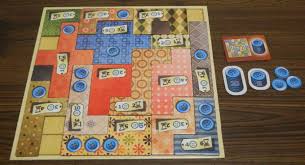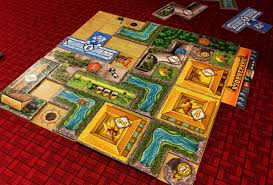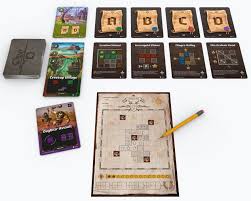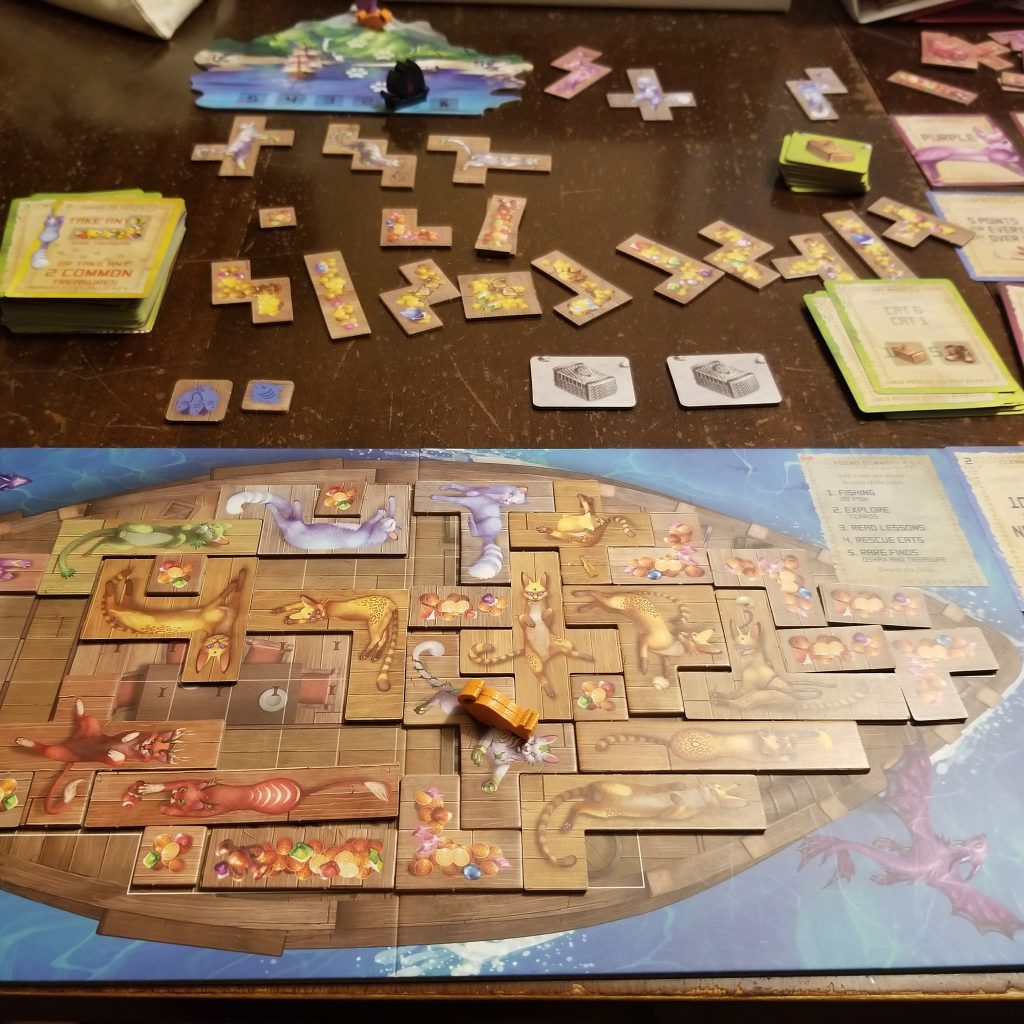4 polyomino games you have to try
This week, we’re going to delve into a very specific category of games– ones that use polyomino pieces – and look at how others have designed some fantastic versions.
But what, you might ask, is a polyomino?
A polyomino is a shape that has cells made up of squares. Think of the pieces in Tetris, but in any size or shape.
There have been a lot of great board games that have come out over the years that make use of these puzzly shapes in different ways. We’re going to look at 4 of them to help you get an idea of how to design a great one.
#4 Patchwork
Patchwork is the first polyomino game I can remember playing. A good friend introduced me to the game and shortly afterwards I found myself buying a copy. We’ve found it to be a good, light 2 player game when you’re in the mood for something relaxing.

In Patchwork, you draft pieces and place them on your board, trying to fill as many spaces as you can by the end of the game (empty spaces score against you). The economy is buttons, which makes this game even more adorable. Every time you pass certain spaces on the time tracker board, you earn buttons equal to the number of buttons on your player board (buttons are on some, but not all pieces).
The turn structure is also quite unique. Each piece you draft has a cost in buttons but also has a time associated with it. Whenever you purchase a piece, you must advance your token on the time tracker board. However, only once you pass your opponent do they get to take their turn.
So, if you manage to pick up pieces with minimal time you may be able to take multiple turns in a row. The pieces are arranged in a circle around the table and you always advance a pawn to the space where you picked up your last piece. You’re only able to draft one of the three pieces in front of the pawn, so you can sometimes get a couple of helpful pieces on your turn or prevent your opponent from getting the one they really need!
#3 Barenpark
Barenpark is similar to Patchwork in some ways, however, it expands on the concept.

Rather than crafting a quilt, you are drafting enclosures for your zoo. Every time you place a piece on top of a symbol on your board, you gain a corresponding enclosure.
You start with one board, and when you cover the construction symbol, you can expand and add another board. The goal is to fill 4 boards to the best of your ability.
You also earn a bear pit when you complete a board. The point value for these bear pits descend as they are earned, so there’s often a race to see who can complete them first!
You get a very satisfying feeling when you’re able to get the right piece to finish off your board, earn that next piece you’ve been eyeing, and score a bear pit right before another player.
#2 Cartographers
Cartographers is a game all about placing polyominos on your board, similar to Patchwork and Barenpark, however, you aren’t placing physical pieces on your board. Instead, you must draw them onto the map that you are tasked with creating throughout the game.

Cards are drawn, one at a time, and all players must choose between the two shapes or two terrain types that are shown. Players draw them onto their own sheet, placing them in ways that will hopefully maximize points based on the common objective cards.
A couple of things really stand out for me with Cartographers: It plays well solo, the goals are always different every game, and there is some player interaction.
Whenever a monster card is drawn (one is added to the deck in each of the 4 seasons during the game), you pass your sheet to another player and they must place the monsters in any position of their choice. Often, they will place them somewhere that you don’t want, and if you don’t find a way to surround them, you’ll lose points at the end of each season.
It’s a little thing, but it adds more player interaction than you typically see in flip and write or roll and write games.
Cartographers also proves that you can pack a great experience into a small box with just cards and sheets of paper. No actual physical polyomino pieces are used. Quite innovative!
#1 Isle of Cats
Isle of Cats has quickly become one of my favourite games. I picked this one up after hearing a lot of good things about it and watching a couple of playthrough videos. The concept and gameplay intrigued me.

I have to say, there is a LOT in this box! It’s probably one of the largest single game box on my shelf. It was stuffed with punch sheets filled with tons of cat and treasure pieces, all formed in different polyomino shapes. Plus, large player boards and another board to track rounds and player order.
Isle of Cats is definitely more thinky than the other three games and typically takes longer to set up and play, but boy, is it worth it!
You start off by drafting cards in a pick-and-pass manner, similar to Sushi Go and Seven Wonders. You have to decide between baskets, speed, treasures, upgrades, and lessons (common or public goals). Then, you use your fish (the economy in the game) to lure cats and place them on your boat. You get bonuses for covering certain spaces and more points for families of cats that are connected and are the same colour.
There are so many ways to earn points (and lose them!) in this game and so many different strategies you can take on, depending on your play style and the lesson cards in play.
It’s so satisfying to draft the right cat and have them fit perfectly into place!
This is a polyomino game that really has it all.
Wrapping it up
If you’re thinking of creating a polyomino game, these four games are great ones to familiarize yourself with. They each share some familiarity while providing their own unique twists and mechanics that highlight them as great games all on their own.
What’s your favourite polyomino game?
Please leave a comment and share your favourite.

3 comments
Faranak
Awesome! I’m designing a game with polyomino liked cards and I thought the cards are unusual. This article gave me some ideas to solve the problem I have and games to play. I didn’t know what to play for studying about my game mechanic. it’s amazing!
Joe Slack
I’m glad this was helpful for you. These are some great games to play and to learn from.
How to create an innovative board game
[…] talk more about Isle of Cats as a great example of polyomino game design in this article as […]